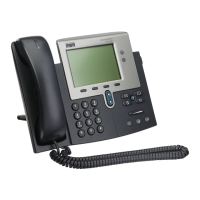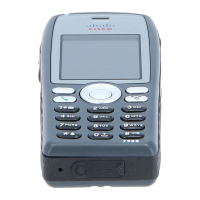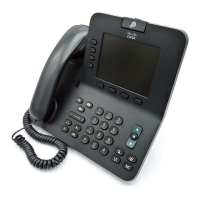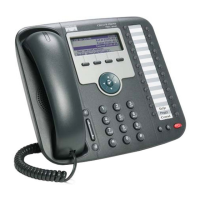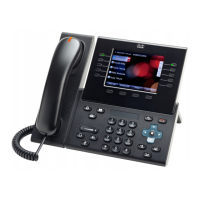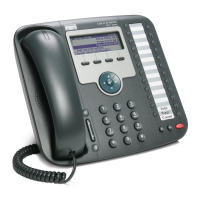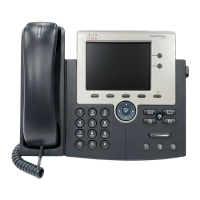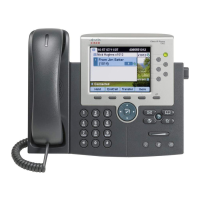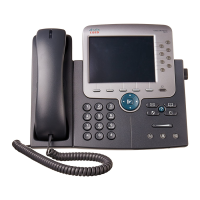Chapter 5 Configuring Features, Templates, Services, and Users
Configuring Model-Specific Features
5-26
Cisco Unified IP Phone 7931G Administration Guide for Cisco Unified Communications Manager 6.0
OL-12457-01
Setting Up a Typical Phone
Because the Cisco Unified IP Phone 7931G does not support multiple calls per
line, you must configure the Directory Number settings appropriately for each
line using Cisco Unified Communications Manager Administration:
• Maximum Number of Calls—set to 1
• Busy Trigger—set to 1
For information about configuring directory numbers, refer to the “Directory
Number Configuration” chapter Cisco Unified Communications Manager
Administration Guide.
Some call features (conference and transfer) must be able to initiate a new call
state to create a conference or complete a transfer. Because the Cisco Unified IP
Phone 7931G does not support multiple calls per line, you must configure a
model-specific phone setting in the Phone Configuration page in Cisco Unified
Communications Manager Administration. Select the Outbound Call Rollover
behavior from these options:
• No Rollover—Conference and transfer do not work in this mode. If a user
attempts to use either of these features, the phone status displays as “Error
Pass Limit.” Choose this mode only if you need to support CTI applications
(see the “Supporting CTI Applications” section on page 5-28).
• Rollover Within Same DN—Conferences and call transfers are completed
using the same directory number (on different lines and in different
partitions). For example, consider a phone that has directory number 1506
assigned to both Line 6 and 7. The user has an active call on Line 6 and
decides to transfer the call. When the user presses the Transfer button, the
call on Line 6 is placed on hold and a new call initiates on Line 7 to complete
the transfer.
• Rollover Across Different DNs—Conferences and call transfers are
completed using a different directory number and line than the original call.
For example, consider a phone that has directory number 1507 assigned to
Line 8 and 1508 assigned to Line 9. The user has an active call on Line 8 and
decides to transfer the call. When the user presses the Transfer button, the
call on Line 8 is placed on hold, and a new call initiates on Line 9 to complete
the transfer.

